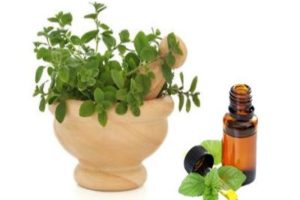

Made from Camellia Sinensis plant, green tea is not fermented like black teas. Instead it is produced by steaming fresh tea leaves at high temperatures. When tea leaves are steamed instead of fermented, many of important plant nutrients are protected. Green tea contains a high concentration of nutrients called polyphenols which play a role in decreasing inflammation and swelling. Polyphenols also help protect the cartilage between bones and lessens joint degeneration. Green tea contains only 2% to 4% caffeine and stimulates the nervous system, heart, and muscles by increasing the release of certain chemicals in the brain called neurotransmitters. Consuming green tea or taking green tea extract containing 150 to 2500 mg of green tea catechins, an antioxidant found in green tea, daily for up to 24 weeks has been found to reduce total cholesterol and LDL cholesterol in people with high levels of blood fats or cholesterol. Early research also suggests that green tea extract might reduce damage to vein and artery walls in people with high...
Read MoreThe healing properties of green tea have long been documented and it’s possible weight loss benefits as well. The phytonutrient found in green tea called catechin is thought to be the main nutrient responsible for the benefits of green tea. A recently published study in the Nutrition Research Journal reviewed data from 6 human trials comparing the effects of catechin (antioxidant) containing beverages (Like green tea) with a placebo beverage to see if catechin beverages could lower the risk of metabolic syndrome. Metabolic syndrome is a medical condition characterized by a cluster of symptoms that include obesity around the mid-section, elevated blood cholesterol, elevated blood sugars, and fatty liver. Metabolic syndrome increases risk for certain cancers, and heart disease. The review found that consuming green tea beverages for 12 weeks significantly reduced abdominal fat, body weight, BMI, and waist circumference; and improved blood pressure. Furthermore, researchers found an improvement in the metabolic syndrome group, suggesting green tea catechins as a potential to prevent diabetes and cardiovascular...
Read More
Oregano – The Flu Shot of the Future
Ever wondered why so many recipes for soups, stews, and sauces call for oregano. If you ever found yourself short, and omitted the oregano, no doubt you didn’t miss it in the final product. Oregano probably wasn’t added to recipes for the flavor value, but instead was added for the medicinal qualities it possesses. Oregano has long been valued in natural health communities for its antibacterial, antiparasitic, antiseptic, antiviral and immune stimulating properties. Building research in mainstream medicine is also re-discovering the many benefits of oregano. Test-tube studies have found that oregano and its components show promise in protecting against viruses. Two compounds, carvacrol and thymol, have demonstrated antiviral properties. Norovirus, a viral infection that causes diarrhea, nausea and stomach pain, was rendered inactive within one hour of treatment with carvacrol and another study found that thymol and carvacrol together, inactivated 90% of the herpes simplex virus in just one hour. Oregano is easy to grow on a kitchen windowsill and contains high amounts of healthy Omega-3 fats, iron, manganese, and antioxidants. Cuttings can be dried and stored for later use. Like the fresh herb, oregano oil has very high amounts of antioxidants and folk remedy uses it internally during illness, and externally for skin infections (including yeast) though it should be diluted before use. Due to potency, it is important to check with a qualified specialist or practitioner before using this or any other herb, especially during pregnancy or breastfeeding....
Read MoreDo we really need to detox or is it simply a fad? Experts in the field think a little bit of healthy detox is a good thing to do. Unfortunately most of the world’s water sources are polluted to some degree with pesticide runoff and other dangerous toxins contaminate our soil, our air, and our everyday living spaces as well. Studies testing umbilical cords of newborn infants for pesticides and plastic residues suggest that accumulation of these toxic substances is a reality, even for the unborn. It is estimated that the average American today is exposed to that upwards of 250 pounds of toxic chemicals a day! Where does all those toxins go? Research by toxicology experts, Dr. Warren Yu at George Washington University, Dr. David Carpenter at University of Albany and the Department of Defense, Dr. Choyke at the National Institute of Health, and researchers Dr. Roy Walford and Dr. John Lester, indicate that most of the toxins we absorb gets stored in our fat tissues and tends to concentrate in the body fat that surrounds the stomach, liver, intestines, kidneys, adrenals, pancreas, and the brain. This may be the primary reason that carrying extra body weight is linked with increased risk for things like diabetes, heart disease, stroke, cancers, even a shortened lifespan. The full effect of these stored toxins is not yet entirely clear, but there is speculation that they may trigger a host of common ailments such as, cancer, Alzheimer’s disease, diabetes, and possibly autoimmune disease. Dr. Yu and Dr. Carpenter worked to help detox rescue workers from 9/11 and Gulf War veterans exposed to agent orange. They found that the two greatest areas where we can eliminate toxins are from our skin and GI tract. Skin is our largest organ and toxins can be sweated out. Engaging in activities that make you sweat and then rinsing off with cool water can provide significant detoxification. A high-fiber diet, i.e., 40 grams of fiber a day or more is another way to help move toxins out through your GI tract. Here are some of the strategies that help to detox: Intense exercise that stimulates sweating and increased breathing Dry skin brushing (removes dead skin cells and toxins)...
Read MoreAnywhere from 5 times to 50 times sweeter than natural sources of sugar, artificial sweeteners have been marketed as a great alternative to sugary drinks and snacks. Thought to be safe and effective for people who needed to lose weight or suffer from diabetes, much of the early research regarding artificial sweeteners seemed to validate their safety. However, now decades and a host of independently funded studies later (instead of funded by the companies that had the most to gain by using artificial sweeteners), a clearer picture of their safety, or lack of it, seems to be emerging. Ninety two percent of independent studies on Sucralose™ and aspartame point to troubling adverse effects on health. Artificial sweeteners have been linked to higher incidents of stroke, cardiovascular disease, diabetes, pre-term birth, depression, and obesity. Possible links are indicated for some types of cancer, liver disease, kidney disease and dementia as well. Once considered a great alternate for diabetics, artificial sweeteners have been documented to increase insulin and blood sugar levels. In fact, one can of diet soda increases blood sugars and insulin 20% higher than drinking the same amount of regular soda. Diet beverages didn’t fare well for those trying to lose weight either. Apparently artificially sweetened drinks and foods alter carbohydrate metabolism in such a way as to increase appetite. “On average, those who drink diet sodas eat 88 to 150 more calories a day compared to those who don’t. Even more troubling is the fact that people drinking diet beverages gained weight even when researchers corrected their diets so there was no increase in calorie consumption. Most artificial sweeteners are not absorbed by our body. Instead they travel down through the colon and are digested by the bacteria in our gut. The fact that these substances are not absorbed was one of the main reasons artificial sweeteners were once considered safe. Ironically, it now appears that is the reason they are so detrimental. As little as one can of soda can significantly alter the type of bacteria that thrive in your digestive tract. Good bacteria help regulate hormones, moods, vitamin and mineral absorption, weight regulation, and so much more. Unfortunately, there is bacteria in our gut that if...
Read More
